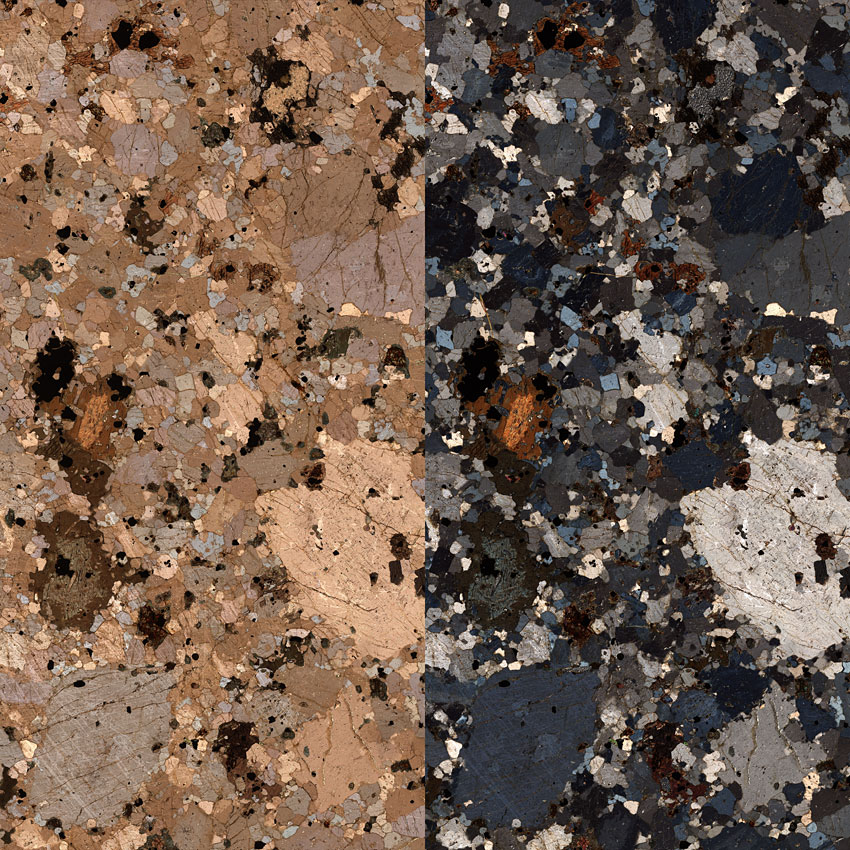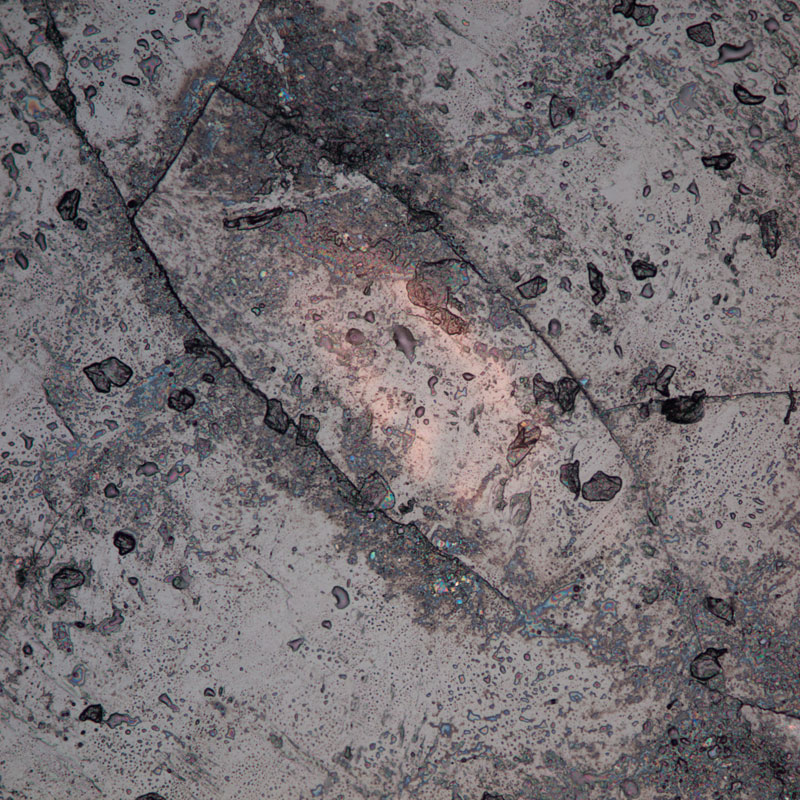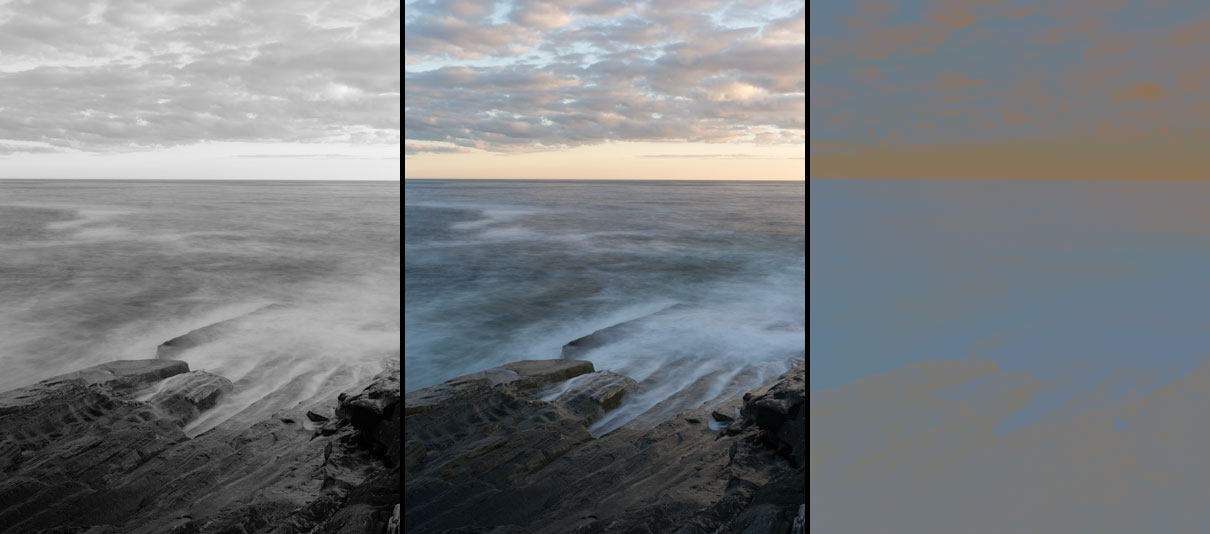 Some material, like the crystals in this granite sample, is known as birefringent, meaning it has two indexes of refraction so the speed light passes through the material depends on its angle of vibration. If you pass polarized light through this material, an odd thing happens—the material divides the light into two perpendicular vibrating rays. Because the rays have two orientations, they move through the material at two different speeds. If the exiting light passes through a second polarizer, the two rays are combined and the difference in their speed creates either constructive or destructive interference, resulting in changes in brightness and color. On the left is a simple brightfield image of a thin section of granite. The right is a polarized image of the same sample. Click on the image for a larger view.
Some material, like the crystals in this granite sample, is known as birefringent, meaning it has two indexes of refraction so the speed light passes through the material depends on its angle of vibration. If you pass polarized light through this material, an odd thing happens—the material divides the light into two perpendicular vibrating rays. Because the rays have two orientations, they move through the material at two different speeds. If the exiting light passes through a second polarizer, the two rays are combined and the difference in their speed creates either constructive or destructive interference, resulting in changes in brightness and color. On the left is a simple brightfield image of a thin section of granite. The right is a polarized image of the same sample. Click on the image for a larger view.
Tag Archives: Light
Magic of Light
 Our experience of light is rather simple —we shine light on something and we can see what it looks like. Shining it from one side or the other does not seem to change the object’s inherent appearance, but just the shading. One of the neat things about microscopes is because they work at such small scales and with very controlled illumination that they can reveal light’s complex nature.
Our experience of light is rather simple —we shine light on something and we can see what it looks like. Shining it from one side or the other does not seem to change the object’s inherent appearance, but just the shading. One of the neat things about microscopes is because they work at such small scales and with very controlled illumination that they can reveal light’s complex nature.
This image is of a tourmaline crystal. The microscope technique is known as a brightfield, meaning if the light striking the sample is not altered by it, you will see an even white field of light. But, because of scattering, absorption, and shifts in phase, the sample modifies the light, decreasing intensity, resulting in an image. This light is parallel to the optical axis. Now, if I took this light and shone it from the side, you would expect a similar result with a few more shadows. Continue reading
More than Meets the Eye
 Cameras imitate human vision. Color is purely a human response to light: it does not actually exist in nature. How far we see in the electromagnetic spectrum, we call that range light, is simply a response of our biology.
Cameras imitate human vision. Color is purely a human response to light: it does not actually exist in nature. How far we see in the electromagnetic spectrum, we call that range light, is simply a response of our biology.
But eyes are not simply tiny cameras. Our vision is a complex system. Part of the retina of our eyes (rods) only sees luminance—how bright things are. Part (cones) only sees color, or, maybe more accurately, differences in color. These signals are transmitted to our brain where it recreates an image of the world. But even in our brain, luminance and color are processed in entirely different areas. So while our experience is a unified vision of a color world (the middle image), the reality is part of our brain is processing luminance (the left image) and another part color (the right image).
We are really not that good at seeing color, which is a late evolutionary adaptation (many animals do not see in color). But it is important. The sky is rather dull in simple luminance—the orange sky at the horizon has the same brightness, or equiluminant, as the blue sky through the cloud. The addition of color in our perception creates far more separation. But color alone lacks structure and detail—color acuity is low in human vision, which why it can be really hard to read red text on a green background when both colors are equiluminant. Click on the image for a larger view.
